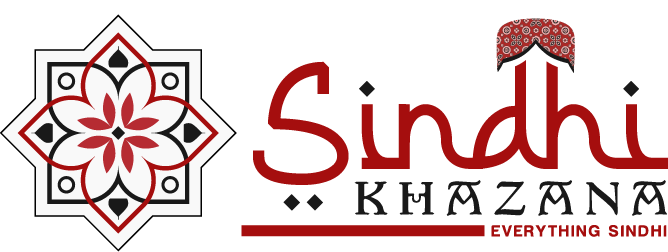Sindhis have always been fashion-forward and conscious of their clothes and looks. They will always wear the best according to their means, whether living in cities or villages.
In the nineteenth century, Sindhi men wore dhoti, jammo (a long shirt), achhi pagree (white turban), and bhochhan ( a shawl, always white). Sindhi Bhaibands (the trader community) wore dhoti with a long kameez, coat, and pughri.
Amils (the educated class working as administrators) wore capacious salwars with angerkho (a kurta fastened to the side) and headgear that resembled top hats. They looked more like Mirs than Hindus. Rich men wore sherwanis (long coats) with gold buttons.
Older Sindhi women wore paro (petticoat), thick poplin cholo (blouse), and chaadar (a white sheet). Some wore sleeveless hip length jablo( top) with a waist-length koti (blouse) with sleeves, on top, and a malai satin paro or suthan (culottes or palazzo). Younger women wore velvet suthan, jablo , and rawa( long muslin headscarf ).
The Sindhi community loves its jewellery, especially diamonds. The Sindhis consider buying ornaments an investment and wear them to display their wealth.
A newlywed bride may wear gold or silver ornaments studded with diamonds, pearls, and precious stones from head to toe. Maang tikka, worn by parting the hair with a pendant on the forehead, gold or diamond necklace, bajo jo kado, an ornament worn around the biceps of the upper arm made of gold and precious stones, pouncho adorning the wrist and the fingers and kamar bandh worn around the waist would be some of the jewellery a bride may wear. Toe rings and anklets complete the look.
Ornaments like mundi (a ring), nath (nose ring) or nathani (nose stud), kanan ja vaala (ear hoops), or kaamp (ear studs), bangles, and tikkaro (a bindi on the forehead – a post partition influence) are a must for a married woman.
Ivory bangles were worn in rural areas though now ivory is banned by international laws.
In the 20th century, Sindhi women took to wearing net and chiffon sarees embroidered with gold or silver thread, and velvet blouses. Sometimes georgette sarees were paired with crocheted blouses. Young men started wearing western pants and shirts.
Today, Sindhis wear western or Indian costumes in trend for a more cosmopolitan look.
Though existing for centuries, Sindhi topi and ajrak have become the emblems of Sindhi culture in the last ten years.
Sindhi topi is cylindrical except for a part cut out in the front. These caps can be handwoven, with small mirrors sewn into it. They can be made of ajrak too. Ajrak is a form of block printing by stamps. Traditionally vegetable dyes are used for the prints, which are geometric in design and are predominately rich crimson or indigo colours with some black or white used to define the symmetry of the design.
Sources:
Book: Glimpses of Sindhiyat –Rituals and Way of Life
Vivek Dalwani -Fashion Designer, Mumbai, Insta ID @vivekdalwani
Jyoti Mulchandani
Ahmedabad

Why do sindhi women always wear a white saree? Did someone die in their family or what is the significance?